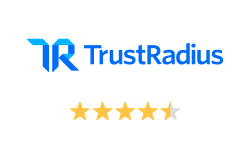Every day your operating system goes unpatched is another day cybercriminals have to exploit known vulnerabilities in your network. In just one year, from 2023 to 2024, cyberattacks exploiting vulnerabilities increased by 124%. Hackers see these software flaws as easy targets for financial gain, building a multi-billion-dollar cybercrime industry that generates massive profits annually.
The most alarming thing is that these cybercriminals rarely face consequences for their crimes because they’ve mastered the art of covering their digital tracks. This makes them feel invincible and drives their desire for gaining more and more financial profits; they don’t care that home users, SMBs, and large enterprises suffer from these sophisticated attacks launched by exploiting security vulnerabilities.
Malware, viruses, ransomware, trojans, spyware, and worms are constantly seeking ways to infiltrate our devices, lock entire databases and critical business workstations, and steal sensitive information for quick profits. Unfortunately, this threat landscape shows no signs of changing anytime soon. The good news is that by keeping your third-party software and operating system updated with the latest patches, you can reduce the likelihood of encountering these security risks and becoming a victim of hackers.
Updates are designed with the prime goal to remediate software flaws, fix software bugs, improve the performance of the devices and the operating system (OS) they run on, and introduce the latest features for a better user experience. But with so many applications in use, you may lose track of which software and operating systems have been patched. And this can become a prerequisite for the perfect storm that hits your systems in the most unexpected moment.
To avoid such a catastrophic scenario, the most efficient solution is using advanced, automated patch management tools that eliminate labor-intensive manual processes. With such a solution, you can get crystal-clear visibility across your systems, identify every single vulnerability, schedule patch deployments at convenient times, test them in a lab environment, and successfully remediate these flaws to “shut the doors” for the cybercriminals.
In this article, we’ll discuss in detail what OS patching is, why it’s important, and whether manual patching is a good practice or your worst nightmare, and how automated solutions can eliminate the stress, reduce risks, and keep your systems secure without causing you headaches. We’ll also cover how to manage OS patches effectively, why testing is crucial, and provide you with one of the best patch management tools on the market.
So let’s waste no more time and get to work.
What is OS Patching?
OS patching is the process of downloading and installing software updates that vendors release to address critical security vulnerabilities, fix performance bugs, improve your system’s overall performance, and introduce the latest software features. By keeping your system up-to-date through installing these patches in a timely manner, you strengthen your system’s security posture and ensure your devices perform optimally. Neglecting these updates significantly increases your chances of experiencing a devastating cyberattack that can have severe consequences for both your company and your clients.
How Patches Support OS Security and Performance
As we already mentioned, deploying patches as soon as they are released protects your systems from the countless cyberthreats trying to set foot on your endpoints. These updates are released after security researchers or hackers discover specific software vulnerabilities. Installing updates as soon as they’re released addresses the flaws that pose threats to your systems. While patching doesn’t make you immune to attacks, it ensures your system won’t be compromised through exploitation of these specific vulnerabilities.
Performance improvements are delivered through updates or alongside security enhancements in most cases. Their purpose is to optimize system processes and fix bugs that can slow down your OS or make it unresponsive, which can be annoying and decrease productivity.
Today, you can choose between two strategies: manual and automatic updates. Manual patching is labor-intensive and overwhelming, while automating the entire process saves time, money, and headaches while improving your organization’s overall security posture.
However, effective patch management requires understanding which updates are critical versus optional, testing patches in lab environments before organization-wide rollout, and scheduling installations properly to avoid operational disruptions or downtime.
Fortunately, efficient and reliable patch management tools are available that automate the entire process—from discovering vulnerabilities and identifying missing patches to testing in controlled environments and using features like update rings for risk-based prioritization and scheduled deployment.
Equipping your company with such a solution reduces the burden on your IT team by automatically installing updates on a predefined schedule while still giving them oversight and control over the patching process to ensure business continuity.
Why OS Patching Is Critical?
OS patching is critical because it addresses security vulnerabilities and protects your devices from being compromised and attacked through flaw exploitation. As we already mentioned, these updates can also improve the productivity of devices in your network through bug fixes and by introducing new features.
Many organizations make a common mistake by thinking that patch management isn’t critical since they have XDR, EDR, or other security tools. They maintain this false confidence until reality hits—their company is devastated by a ransomware attack that began with attackers exploiting vulnerabilities in their OS or third-party applications.
But why would you risk a single unpatched vulnerability in your OS providing attackers with initial access to your network, potentially leading to the compromise of your customers’ records and sensitive information? That could cost your company millions in regulatory fines and destroy decades of trust. It would take weeks or months to recover from such a breach, leaving you with little opportunity to restore your reputation.
The importance of automated patch management in cybersecurity cannot be overstated because it’s the difference between a secure, resilient organization and becoming tomorrow’s headline breach story. So never delay installing these critical updates that vendors offer users after dedicating significant resources to development and testing, all designed to strengthen your security posture. These updates prevent exploitation that could lead to serious compromise of your security infrastructure and potentially catastrophic data breaches.
Always remember that cybercriminals don’t wait—they begin weaponizing vulnerabilities within hours of public disclosure. The best way to respond to these threats is by equipping your production systems with a patch management tool that completely automates the deployment of software updates.
Real-World Consequences of Missing Patches
The financial and operational impact of unpatched systems has reached staggering proportions. Unpatched vulnerabilities are directly responsible for 60% of all data breaches, demonstrating how missing patches create direct pathways for attackers.
For example, the MOVEit vulnerability began being used on May 27, 2023, and affected thousands of organizations and almost 100 million individuals.
Fortinet’s CVE-2023-48788 demonstrates ongoing exploitation risks. Adversaries have exploited CVE-2023-48788 in FortiClient enterprise management servers to install unauthorized remote management and monitoring tools (malicious files) and PowerShell backdoors. This critical SQL injection vulnerability allowed attackers to execute system-level commands on unpatched servers.
Change Healthcare’s $2.9 billion loss illustrates the true cost of security failures due to delayed patching. UnitedHealth-owned prescription processor Change Healthcare was the victim of a massive cyberattack that cost the company nearly $2.9 billion, affecting 500 million individuals’ private data and triggering federal investigations.
Manual and Automatic Updates
The choice between manual and automatic updates determines how effectively your team manages patches and addresses security vulnerabilities across your infrastructure.
Difference Between Manual and Automatic Updates
Manual updates require user or administrator consent before installing any software update. In that case, your IT team must constantly search for, download, and test patches in controlled environments and then install updates manually across every single endpoint in your organization’s network. This approach gives you complete control over when and how your operating system receives security patches, but it is a resource- and labor-intensive process.
Automatic updates, in contrast, function with minimal human intervention because a third-party patch management tool automatically downloads and installs software updates as soon as vendors release them. Such a solution takes care of all the processes like vulnerability identification, missing updates detection, testing, scheduling, and deploying them successfully, thus ensuring your endpoints receive critical vulnerability fixes in a timely manner.
Pros and Cons of Each Method
Since we already briefly weighed the positives and negatives of both approaches, it is time to have a closer look at all the pros and cons of each method.
-
Manual Updates
Pros:
-
Your team maintains complete control over when and how to install updates manually across production systems.
-
You can test patches thoroughly before deploying them, which prevents software compatibility issues that might cause decreased system performance.
-
This method allows you to visit vendor sites directly, verify software file authenticity, and schedule installations during planned maintenance windows without affecting system availability.
Cons:
-
Manual updates create security risks by delaying critical vulnerability fixes while your team evaluates each update.
-
Manually patching your systems is a time-consuming and labor-intensive process. With the constant releases of new updates, your IT will face difficulties deploying every single patch across multiple servers, endpoints, and other digital devices.
-
Your organization remains exposed to security vulnerabilities longer, potentially allowing cybercriminals to exploit still unpatched systems.
-
Automatic Updates
Pros:
-
Automatic software updates equip you with immediate protection against security vulnerabilities without requiring user or administrator consent for each installation.
-
Your system automatically downloads, tests, and installs software files to address security vulnerabilities before attackers can exploit them.
-
his approach ensures consistent patching processes across all network devices, reducing administrative burden while keeping your systems up-to-date.
-
Entirely automate each step of the patch management process: vulnerability identification, missing patch detection, risk-based vulnerability prioritization, testing, scheduled deployments, and reporting.
-
Minimized downtime risks through using features like update rings for automated and reliable patch testing.
-
Keeping OS and third-party applications up-to-date guarantees that your company adheres to the strict regulatory frameworks, eliminating the chance of facing costly fines and penalties.
Cons:
-
Untested software programs might cause unexpected performance problems or conflicts with existing software and operating system configurations.
-
Some automatic patch management solutions come with hefty price tags that can strain your IT budget, especially for smaller businesses that need enterprise-level features but can’t afford the premium costs.
How to Manage OS Patches Effectively?
What’s worse than a cyberattack? Knowing you could have prevented it with proper patch management that would have addressed the exploited software vulnerability. Keeping your operating systems secure requires more than just installing updates—it demands a proper patch management strategy you can rely on to protect your company from falling victim to cybercriminals.
So let’s discuss how your team can manage patches like cybersecurity pros:
Build a Patch Management Policy
First, create a clear and structured patch management policy. Identify which systems need close monitoring, who will manage the process, and how often patches should be applied. This step is of utmost importance—without defined roles and timelines, it’s easy to lose track and leave your systems exposed to critical vulnerabilities.
Use Reliable Patch Management Tools
Equipping your company with an automated patch management tool is a must. Such a solution will manage the entire process with minimal to no human involvement. One of the greatest benefits is that, through automation, your IT team gains complete visibility over the patch status of every single endpoint connected to your network.
You’ll know when a new vulnerability emerges, identify the patch addressing it, test it in lab environments or through update rings, schedule patch deployments at convenient times to avoid downtime, and—most importantly—automatically gain detailed compliance reports for every installed update. Remember to choose a patch management tool that can handle both OS and third-party application updates with precision.
Always Test Patches Before Deployment
Have you ever rushed to roll out a patch to production endpoints only to watch your systems crash worse than the vulnerability you were trying to fix? Never roll out updates across your endpoints without testing them first; it’s a critical mistake. Unfortunately, sometimes OS patches may introduce bigger problems instead of solving existing ones, potentially leading to decreased system performance, software compatibility issues, or even downtime.
So before deploying OS patches, test them in a lab environment or use an update rings feature like the one Action1 provides. With this feature, you can group your endpoints into so-called “rings” and set specific success metrics. Once an update meets these metrics, it progresses to the next ring—reaching the rest of the endpoints in your network. This feature prevents problematic updates from breaking your business-critical systems.
Schedule Regular Patch Cycles
Your employees have scheduled work hours, right? Your patching process should follow a schedule, too. A good practice is to divide your endpoints into groups, including non-critical systems and mission-critical infrastructure, and establish regular maintenance windows. Additionally, ensure your IT team promptly addresses critical OS vulnerabilities, as these require immediate action—even outside your predetermined schedule. This hybrid approach gives your team the needed flexibility without compromising security.
Monitor and Review
After deploying patches, review the logs and confirm successful installation. It’s essential to monitor your systems for 24–48 hours after patching to ensure everything works as expected. Your IT team must closely track each system for missed or failed updates, as these can leave your organization exposed to severe security risks.
Keep in mind that with reliable patch management tools like Action1, you don’t just automate the process—you gain 360-degree visibility across your network with immediate alerts for both successful and failed update installations.
End-of-Life Software and Patching Challenges
What’s scarier than running outdated software? Running one that will never receive another security update. When your operating system reaches end-of-life and you continue using it, you put your entire company at risk, since critical vulnerabilities will remain unaddressed and become easy targets for cybercriminals. But that’s not all—your organization also faces compliance violation fines, potential data breaches, denial of insurance coverage for security incidents, performance degradation, and legal liability when using end-of-life software.
Of course, you can prevent such potentially catastrophic scenarios by starting to plan your upgrade to the latest OS version the moment software vendors announce end-of-life dates. Don’t wait until the last moment when security patches stop being released before taking action, as this is a mistake that can cause irreparable damage to your company and its reputation.
So once you hear such news, start creating an up-to-date inventory of all your endpoints running the soon-to-be unsupported software. Then you must assess which applications depend on the old OS and identify potential software compatibility issues with newer versions, since this planning phase can help you avoid costly surprises.
Next, you must prioritize migrating critical systems first, especially those handling sensitive data or customer information. If there are any systems that can’t be immediately upgraded, equip them with additional security tools and layers, like network segmentation, enhanced monitoring, and restricted access controls to minimize exposure.
Finally, establish clear timelines for the complete migration and adhere to them strictly, as each day you delay the upgrade raises the risk of a cyberattack, as hackers actively target security vulnerabilities in unsupported EOL software, knowing they are never going to be patched.
OS Patching Best Practices
OS patching is a highly important process in your security strategy because it can either remediate vulnerabilities and improve the performance of your devices or introduce new issues and cause your IT team serious headaches. Deploying patches must be done strategically, safely, and systematically to deliver the expected results.
The following four best practices we will now discuss will help your IT team streamline the entire process and transform it from reactive chaos into proactive protection that keeps your systems secure without breaking your business by causing unexpected issues or downtime.
Use Risk-Based Patch Prioritization
Prioritize patches based on their severity score, as treating them equally will deplete your resources and leave your organization vulnerable. Start using vulnerability management tools to promptly assess which vulnerabilities pose the greatest threat to your company. Then focus on deploying patches that address actively exploited flaws first, especially those affecting systems that store and handle sensitive information.
By using vulnerability or patch management solutions, you will be able to benefit from risk-based patch prioritization that provides you with clear information about vulnerability severity, exploitation likelihood, and their potential impact on your business.
This will enable your IT team to focus on patching critical flaws immediately, while less important systems and patches can wait for scheduled maintenance windows without posing security risks to your company. Risk-based prioritization ensures you are addressing the most dangerous problems first rather than wasting time on low-risk updates, thus minimizing the possibility of experiencing devastating cyberattacks.
Staged Rollout Strategies
Deploying OS patches across all devices on your network simultaneously is a serious mistake leading to unexpected downtime caused by problematic updates. To avoid such a scenario, it is essential to roll out updates in carefully planned stages, beginning with test endpoints, followed by non-critical production systems, and finally extending to business-critical devices.
Always group your systems based on their function and importance. Deploy patches to your least critical systems first, monitor for any issues, and then gradually expand to more important ones. This strategy will enable you to identify problems early before they cause business operational disruptions.
Implement Patch Rollback Procedures
Even if you roll out updates in stages, patches may still break things worse than the vulnerabilities they are supposed to fix. You might wonder, how can this be true if the updates show no issues in the testing group of endpoints? Well, sometimes problems occur at your operational-level endpoints, despite not causing problems initially. Clear rollback procedures serve as a life-saving option by allowing you to quickly reverse changes if any problems arise.
That’s why it is important to document the exact steps needed to uninstall patches and restore your affected systems to their previous healthy state, so you have a clear plan when unexpected situations occur. Before starting to deploy updates across your network, ensure you have created system snapshots to make sure you have a plan B, and then test your rollback procedures regularly to ensure they work flawlessly when you need them. This strategy gives your IT team confidence to patch more aggressively without fear of permanent damage.
Maintain an Audit Trail
Last but not least, keep detailed records of every patch deployed, when it was installed, which systems were affected, and any issues encountered during the entire process. Such documentation will be invaluable for troubleshooting, compliance audits, and creating a chronological patching history, so don’t underestimate its importance.
Why Third-Party OS Patching Software is a Must for Any Business?
Third-party OS patching software can automate and streamline every single step of the update process. Equipping your organization with such software provides you with everything needed to improve your security posture, keep devices operating at peak performance, address software vulnerabilities quickly, and generate audit trails from a single dashboard with just a few clicks.
If your organization still relies on software with limited functionality, like Windows Update, or manually patches devices, you are wasting time, money, and manpower instead of focusing efforts on growing your business. It’s well known that automation boosts operational efficiency, eliminates time-consuming processes, and increases the profitability of businesses operating in different industries. Here’s why your company can’t afford to skip dedicated patch management software:
Centralized Management Across Multiple Systems
Third-party OS patching tools provide your IT team with complete control over when and how they deploy updates across on-premises and remote endpoints. Such a solution provides the ability to manage hundreds or thousands of endpoints from a single console with just a few clicks. You can keep all of your organization’s systems up-to-date, schedule deployments at convenient times to avoid downtime, and significantly reduce the attack surface while minimizing the chance of vulnerability exploitation.
Enhanced Security and Vulnerability Management
Most cyberattacks succeed by exploiting known but unpatched software vulnerabilities in organizations’ endpoints. Professional patch management solutions like Action1 provide you with vulnerability management capabilities that successfully identify flaws in your OS and third-party apps before they become a reason for security breaches.
These platforms direct users to the most critical vulnerabilities that need immediate attention, ensuring nothing falls through the cracks. Such tools automatically download available software updates from trusted vendor websites or from their own software repository, prioritize them correctly, and offer flexible deployment options to help you remediate vulnerabilities in a timely manner, with the main goal of securing each endpoint in your network with minimal effort.
Business Continuity and Risk Reduction
Equipping your company with third-party OS patching software, apart from fixing bugs and addressing system vulnerabilities, delivers something way more important: boosting your business continuity. These tools provide you with efficient rollback procedures, flexible scheduling, testing environments, and staged deployment options that minimize the chance of experiencing downtime, compatibility issues, or other operational disruptions caused by problematic patches.
Compliance and Reporting
Professional OS patching software automatically generates detailed audit trails and compliance reports that help organizations meet regulatory requirements without the manual paperwork nightmare. These tools track every patch deployed, document system changes, and provide instant proof of compliance for auditors and regulatory bodies.
You’ll never again scramble to answer questions like “When was that critical security patch applied?” or “Which systems are still vulnerable?” The software maintains comprehensive records of patch status, deployment timelines, and remediation efforts, giving you bulletproof documentation for SOX, HIPAA, PCI DSS, or any other compliance framework your industry demands.
Instead of spending hours manually compiling patch reports, you get automated dashboards showing compliance percentages, identified vulnerabilities, and remediation progress. This level of documentation not only satisfies auditors but also helps your security team track improvement over time and demonstrate the business value of your patch management investments to executive leadership.
Action1 is the Perfect Software for Operating System Patch Management
Action1 is a cloud-native patch management platform that completely automates the patching process for Windows OS, macOS, and third-party applications. The software is infinitely scalable, making it a perfect choice for businesses of all sizes, regardless of how many endpoints are in their network.
Once installed, Action1 automatically detects every vulnerability across each endpoint (note that agents must be installed on each device) and prioritizes them based on CVSS scores and likelihood of exploitation, using data from CISA KEV (the Cybersecurity and Infrastructure Security Agency’s Known Exploited Vulnerabilities catalog). The platform then lists all missing updates across your OS and third-party apps and downloads them from a private, secure software repository, where each patch has been thoroughly tested for reliability and safety. The P2P patch distribution delivers those updates faster and prevents bandwidth issues, optimizing your network traffic usage even when deploying large software packages across your endpoints.
This gives your IT team complete visibility into every endpoint, OS, and application status. With Action1, you can automate patch deployments and ensure that only reliable and tested patches reach your production endpoints through staged rollouts using the update rings feature, which allows you to create customizable groups of endpoints.
You can establish specific success rates and deployment counts in each ring to determine if an update should proceed to the subsequent stage. Updates that pass these metrics in earlier (or ‘inner’) rings move forward to the outer rings. There’s also an option to manually exclude updates if needed. This intelligent approach ensures that updates are regularly validated, reducing the risk of failures and unexpected downtime caused by problematic patches.
With flexible scheduling options, your IT team can create maintenance windows at convenient times, during weekends, or outside business hours to avoid disrupting business continuity. Managed Service Providers (MSPs) and large enterprises can take advantage of the newly introduced feature that allows for update approval or decline on a per-organization basis. This capability enables the deployment of specific updates across designated departments and clients, providing the necessary flexibility to improve your endpoint security while ensuring productivity remains unaffected. With this tool, you can access and control endpoints anywhere in the world, right in your web browser, without needing a virtual private network connection.
Action1 is certified for SOC 2 and ISO 27001, which is another reason why it’s trusted by thousands of enterprises and manages millions of endpoints worldwide. The software has an intuitive and user-friendly interface where you can easily generate automated compliance reports after each update deployment. This eliminates the countless hours your IT team would otherwise spend annually compiling the reports needed for regulatory compliance. Action1 offers 100+ built-in reports on patching, software and hardware inventory, and security configurations. You can also clone and customize existing reports by adding or removing columns, changing specific filters, ordering, grouping, and more.
If you still have doubts about whether Action1’s autonomous endpoint management platform is the right solution for OS patching, you can test it on up to 200 endpoints for free, without any functional limits and without paying a single dollar. This way, you can try it across your network to evaluate whether it meets your expectations and make informed decisions before deploying it across every single endpoint in your company.
For smaller businesses with fewer than 200 endpoints, they can enjoy free usage forever, and once they grow from hundreds to thousands of devices, they benefit from a gradually lowering per-endpoint cost.
Make the smart move and start using Action1 to improve your organization’s overall security posture by automatically patching your Windows OS, macOS, and third-party applications. While cybercriminals won’t like it, your IT team will definitely love having a patching solution that just works.
About Action1
Action1 is an autonomous endpoint management platform that is cloud-native, infinitely scalable, highly secure, and configurable in 5 minutes—it just works and is always free for the first 200 endpoints, with no functional limits. By pioneering autonomous OS and third-party patching—AEM’s foundational use case—through peer-to-peer patch distribution and real-time vulnerability assessment without needing a VPN, it eliminates costly, time-consuming routine labor, preempts ransomware and security risks, and protects the digital employee experience. Trusted by thousands of enterprises managing millions of endpoints globally, Action1 is certified for SOC 2 and ISO 27001.
The company is founder-led by industry veterans Alex Vovk and Mike Walters, American entrepreneurs who founded Netwrix, which has grown into a multi-billion-dollar industry-leading cybersecurity company.




